Touch Typing Basics: A Beginner's Guide
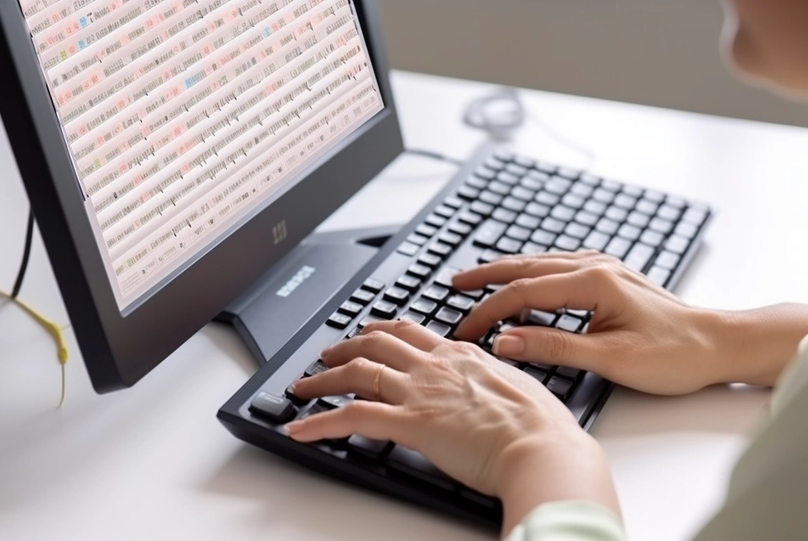
Are you tired of pecking and typing using only a few fingers? Fed up with unnecessary errors slowing you down? Say hello to touch typing. The ultimate typing technique allows for a fluid and more accurate typing experience, significantly boosting your confidence in your ability to type faster and more accurately.
Anyone can master touch typing with continuous practice. Developing muscle memory allows your fingers to automatically locate the keys on your keyboard, making typing feel like a breeze. Learn about the touch-typing basics in this comprehensive beginner guide and know which techniques, exercises, and software can help you master your keyboard.
What is Touch Typing?
Have you ever watched someone typing on a computer and marveled at how they don't seem to be looking at the keyboard at all? That's touch typing what you are here to learn! It is a method of typing on a keyboard where the typist uses all ten fingers to type without looking at the keyboard. Instead, they rely on muscle memory to know where each key is located.
It's more like playing an instrument where you know where each note is without having to look at the keys or strings. This is a valuable skill to have if you need to type a lot, like writers or office workers, because it makes you faster and more efficient.
Benefits of Touch Typing
From reduced repetitive strain injuries to increased accuracy, speed, and productivity, touch typing has many benefits. Some of these are given below;
- Improved Posture: Touch typing involves the use of proper finger placement which allows for a proper typing posture and hence reduces the risk of repetitive strain injuries.
- Reduced Physical Strain: Since touch typing is only possible when you are using proper finger placement and typing posture, it exponentially reduces the risk of physical strain
- Improved Spelling and Vocabulary: With your mind solely focused on the content being produced, it can improve your vocabulary and reduce misspellings.
- Increased Confidence: Being able to type fast and accurately can surely give you confidence in your typing ability.
- Better Job Prospects: In the current digital world, many jobs require employees to be proficient in touch typing. This can increase your job prospects and opportunities.
- Improved overall computer skills: As you become more proficient and comfortable in the use of your keyboard, it helps improve your overall computer skills.
- Faster typing speed: The touch typing method allows for a faster typing speed because you don’t have to look down at the keyboard to locate keys. In other words, you don’t have to think about the physical process of typing itself and can better focus on the content to be typed.
- Increased Productivity: You can complete your tasks quickly with a faster typing speed, which can increase your productivity and efficiency.
- Reduced errors: You are less likely to make errors since touch typing completely relies on muscle memory rather than continuously looking down at the keyboard and typing using two fingers only.
- Improved Accuracy: With your mind completely focused on the content being typed rather than the physical act of typing itself, you are much more likely to be more accurate.
Benefits of Learning to Type with Both Hands
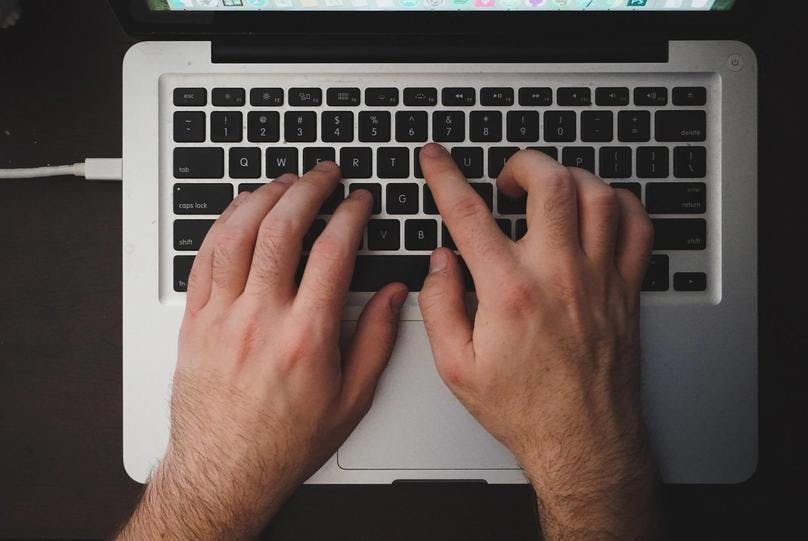
Learning to type with both hands, also known as touch typing, has many benefits, from improving typing speed to increased productivity and reduced risk of repetitive strain injuries. Touch typing is also a transferable skill. It means that you can use it in a variety of different settings and professions; for example, learning touch typing can also help you learn to play musical instruments with keys, such as a piano.
Disadvantages of Not Typing with Both Hands

If you are not using the touch typing method, you are using either the hybrid method or the hunt-and-peck method, and maybe you are quite good at it as well. But why are you straining your fingers, hands, and wrists and risking permanent damage to your physical health? The disadvantages of not typing using both hands are as follows;
- Reduced Typing Speed: Not using both hands while typing can lead to reduced typing speed. In this modern, fast-paced world, there is no place for unhurried or dilatory typing, as it will make you less valuable compared to a person who can type fast.
- Increased Errors: In addition to reduced typing speed, not typing using both hands will also increase errors in your work, once again affecting your proficiency and efficiency in performing a task.
- Impact on Physical Health: Not typing using the touch typing method will cause strain on your hands and wrists which, if not treated properly, can even lead to more serious consequences like Carpel Tunnel Syndrome that may require surgery to be treated properly.
- Limited job opportunities: Imagine you are hiring a web developer, and you have to choose between two, and you give them a task to perform. One performs it within an hour with more accuracy and no errors; the other takes 3 hours and also shows errors in the final result. Which one will you finalize? The one who performed the task accurately in less time. Similarly, if you are not able to type fast with more accuracy, why would anyone hire you over a person who types fast and accurately?
- In-efficient Use of Time: If you are not typing using both of your hands, you are not making the full out of your precious time. It is affecting your productivity and will affect not only your professional life but also hinder your ability to perform routine tasks like driving and cooking. typing lessons
Learn Touch Typing

Learning touch typing may prove to be very hard by yourself; you can always use free typing lessons available at Typing Mentor and work smarter, getting results in a shorter time. Keep track of your previous performance stats and set shorter, more achievable goals rather than setting a longer period to master touch-typing.
Tips on Learning Touch Typing
You can follow the following tips while learning touch typing;
- Start with the basics: Start by learning the proper finger placement. The standard method is placing your fingers on the home row keys; ASDF for the right and JKL; for the left hand.
- Resist the urge to look at the keyboard: Resist looking at the keyboard, and use mindfulness techniques like deep breathing while controlling the urge to look at the keyboard.
- Learn how to use both hands: Touch typing is only possible when you use both hands. So, start practicing typing using both of your hands.
- Practice regularly: It is the only way to learn touch typing properly since it completely depends on muscle memory. Practicing is the only way to develop muscle memory.
- Be patient: All good things in life take time. There is no point in rushing the process because it won’t do any good; you must be patient and put in consistent efforts.
- Use a typing tutor: There is much online software that can help you learn Touch typing, like Typing Mentor. You can access 35 different typing lessons for free on Typing Mentor.
- Don’t rush: Being able to type accurately is better than typing faster with no accuracy. Trust the process, take your time, and hit the right keys.
- Use proper finger placement: This will help you type faster and more accurately.
- Take breaks: Do not forget to take frequent breaks to avoid strain and fatigue. Stretch your hands and arms and give some rest to your eyes.
- Use Proper Posture: Keep your feet flat on the ground, and adjust your seat’s height so that your thighs and forearms are parallel to the ground.
In addition to these very helpful tips, you should also focus on improving your brain-type connection. As it is a necessity for mastering the art of touch typing.
Proper Posture and Hand Positioning
Proper posture and hand positioning are as important as a healthy diet. Like a healthy diet, proper posture and hand positioning can prove to be beneficial in the long run. Without proper posture and hand positioning, you are constantly at risk of repetitive strain injuries that can lead to more serious consequences like Carpel Tunnel Syndrome if not treated properly.
For you and anyone else learning how to touch type, it is imperative to have a proper posture and finger placement to be able to master the technique and be productive. Achieving a proper posture allows for a fast, efficient, and more accurate typing experience; it can help boost your confidence.
Touch Typing Practice
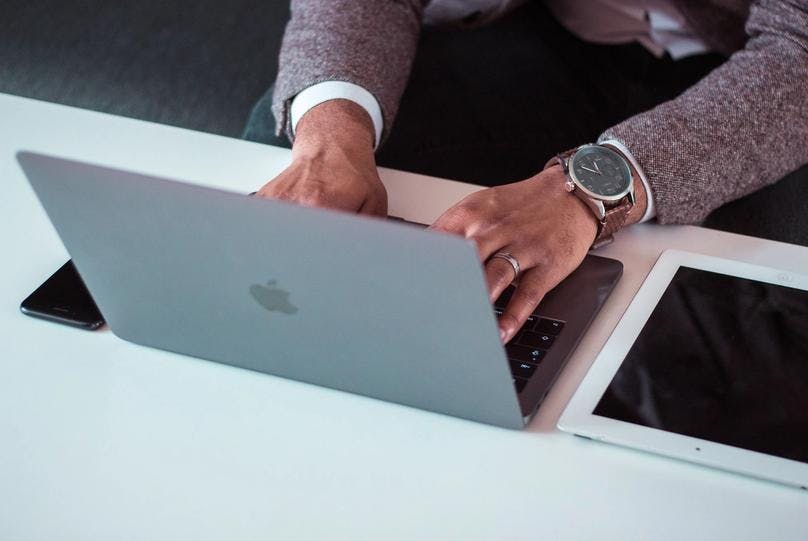
“Practice makes a man perfect” The same is true when learning touch typing. You can perfect your touch-typing technique or even learn this technique from free web applications like Typing Mentor. Other than the typing tools necessary for typing; willpower, and consistency play a major role in learning to touch type.
Since touch-typing depends on muscle memory, practicing regularly is the only way to strengthen your muscle memory. Strengthened muscle memory means a strong brain-typing connection that allows for a fluid and more accurate typing experience.
For your convenience, we are providing here, a space to practice typing. Take a test and you will see the difference.
How was your typing experience? Wasn't it amazing! You can sign up here and discover 35+ effective lessons with detailed statistics and lifetime progress tracking of your performance.
Touch Typing Drills and Exercises
Touch typing drills and exercises mostly focus on helping you develop strong muscle memory for a stronger thought-type connection so you don’t feel the need to look down at the keyboard while typing. This allows for a fluent and more accurate typing experience.
Common Touch-typing Drills and Exercises
Want to learn touch typing accurately and quickly? Below are some common drills and exercises for touch typing;
- Word drill: This drill involves typing as many words as possible within the given time with speed and accuracy.
- Sentence drill: Similar to word drill, you have to type as many sentences as possible within the given time with accuracy and speed.
- Paragraph drill: This involves typing a paragraph as quickly as possible with accuracy.
- Speed test: It is a great way to evaluate your progress and know at what wpm speed you are accurately typing currently.
- Key combination drill: This drill involves typing a combination of keys, such as Ctrl + C, as quickly as possible and with accuracy.
Remember, if you are starting, speed is currently irrelevant to you; you just need to focus on accuracy first.
Click here for tips on how to choose the right typing test according to your needs.
Personalized Typing Drills and Exercises
Personalized typing drills are a great way to improve your skills based on your weaknesses and needs. Here are some tips for personalized typing drills;
- Identify your weakness: For you or for me to create a personalized typing drill, we first need to identify our weaknesses. It can be some letters that we are not accurately able to hit or maybe a combination of keys.
- Create a custom word list: After identifying your weakness, analyze it and figure out if there are any certain words that you find hard to type. Make a list of these words and words similar to these.
- Practice Transcription: Another way to personalize your typing drill is to practice transcription of either videos or your favorite Spotify podcast.
- Use Online Typing Programs: If you are not able to identify your weaknesses, you can use online typing programs like Typing Mentor. You need to sign up for free and create an account using either your Google ID or email ID. You’ll be able to track all your previous performance stats and better identify your problem areas.
- Create Custom Exercises: Based on your identified individual weaknesses, you can choose a typing lesson or test that suits your needs.
Self-evaluation is a great way to polish your skills. Identifying your problem areas and improving your skills in those areas by practicing regularly can help you become a fast and accurate touch typist. Here is a list of some popular online typing tests that can help you do that.
Finger Placement Exercises
Finger placement exercises can greatly impact your progress while learning touch typing. Other than helping you learn, these exercises also play an important part in preventing repetitive strain injuries. You can incorporate the following exercises into your daily routine;
Basic Finger Placement Exercises
To start Touch typing, one must first know where to place their fingers on a keyboard properly. You can use Typing Mentor as your tutor for free to learn touch typing. The basic finger placement is generally ASDF for the left and JKL; for the right hand, with your thumbs resting on the spacebar. The two home keys for your index fingers, F for your left and J for your right, usually have a raised bar to help you recover and return to the starting position.
You can easily get a hold of this by practicing regularly and developing muscle memory. After getting hold of the home row keys, you can start stretching and reach for keys in the rows above or below the home row. Then you can practice pressing multiple keys at the same time; for example, you might need to use shift + A or Ctrl + C to get your work done accurately. You can incorporate the following finger placement exercises into your routine;
- Finger stretches: This exercise is used to stretch your fingers to improve flexibility and reduce tension. Hold your hand palm down in front of you, and using your other hand, gently pull each finger towards your wrist until you feel a stretch. Repeat this several times.
- Finger tapping: This exercise involves tapping each finger in a sequence on a flat surface, starting from your pinky finger and going toward your index finger. Reverse the order and do it again. Repeat this several times for both hands.
- Finger Lift: Place your hand on a flat surface, palm down. Lift your fingers one by one starting from your pinky finger and moving toward your index finger. Do the same for both hands multiple times.
- Typing Exercises: There are several finger placement exercises that you can do to improve your typing speed and accuracy. You can find such exercises on online typing software like Typing Mentor. This particular software will guide you on which finger to use while typing or stroking a particular key.
Remember to start slow and be accurate rather than fast and inaccurate. Gradually increase the speed and difficulty of your exercises for optimal results.
Typing Practice that Focuses on the Home Row Keys
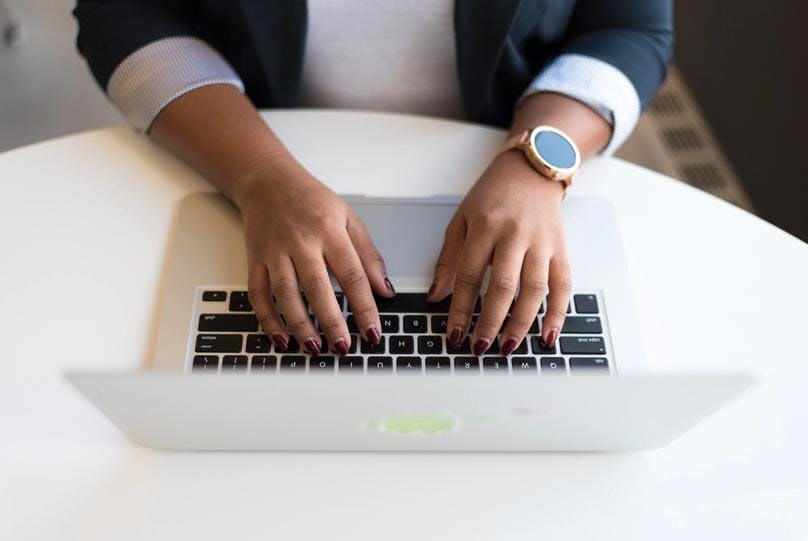
Home row keys are the foundation of touch typing. Typing with the proper hand placement on the home row keys can significantly boost your confidence and typing accuracy. Here are some exercises that solely focus on home row keys;
- Home row practice: Practice typing each alphabet on the home row key until you can do it without looking at the keyboard.
- Home row words: Practice typing words that can be formed using alphabets from the home row, like “dad,” “fad,” “lad,” “sass,” “had,” “add,” and “all.” Gradually increase the difficulty level as you improve your typing speed and accuracy.
- Home row sentences: After getting the hold of the words, you can start typing sentences like “As a lad, Dan had a bad Dad,” gradually increasing the length and complexity of the sentences.
- Home row speed drills: Set a timer for a few minutes and see how many words you can type correctly using the home row keys only. Focus on accuracy rather than speed in the beginning; gradually increase your typing speed as you get more comfortable with the home row keys.
You can access these home rows and many other practice drills for free on Typing Mentor.
Typing Practice for Beginners
Typing practice is essential for anyone who spends time on a computer, either for work or leisure. Like any other skill, touch typing requires regular practice. The ability to type using all ten fingers without looking at the keyboard can increase your speed and accuracy. For that to happen, you first need to understand the importance of muscle memory and why being consistent matters.
Importance of Muscle Memory
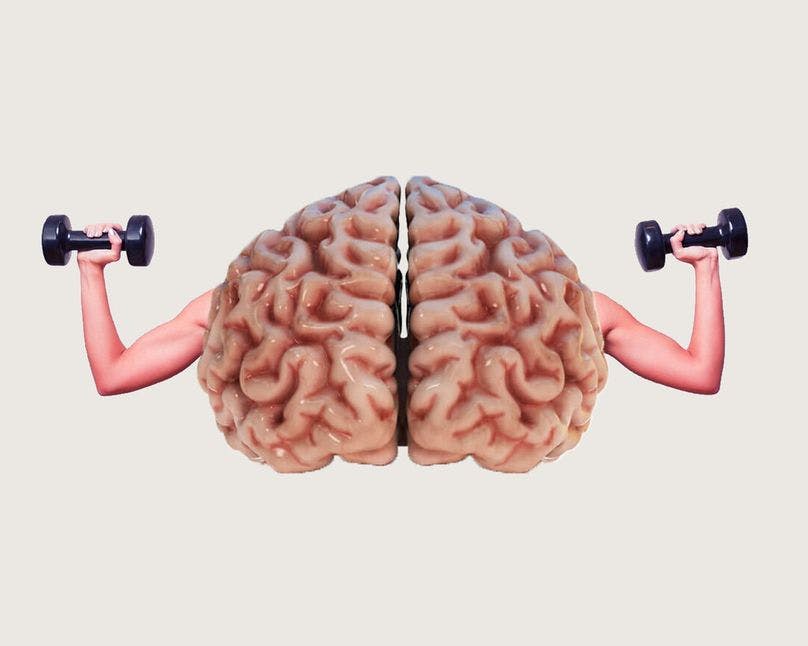
Developing strong muscle memory is important because it allows you to type freely and instinctively without looking at the keyboard and even thinking about the typing process. It allows you to focus better on the quality of the content being produced, hence drastically improving not only your typing speed but accuracy as well, ultimately increasing your productivity and cementing you as a valued employee not only in your current organization but in others as well.
Didn’t get it? No worries, if you are an anime fan like me, you’ll be able to understand it by reading the next line.
Achieving touch typing proficiency by developing strong muscle memory is like achieving “Ultra Instinct” form, and much like ultra instinct where every muscle of your body is working independently without even thinking about it, your fingers work independently without thinking about what keys they are pressing when you become proficient enough in touch-typing.
Being Consistent
Being consistent in your efforts is the key to success in every field of life, let alone in learning or mastering touch-typing. You need to have willpower, and you need to be determined enough to consistently put in the effort while learning or even mastering touch typing, as it is the only way to develop muscle memory, and we all know by now that a strengthened muscle memory means more proficient and accurate typing experience for you.
Being consistent will help not only you in your professional life but also your personal life by helping you keep focused and achieve any goals that you set for yourself. These goals include working out regularly in the gym or learning new skills like playing the guitar. Being Consistent will bring a positive change in your overall day-to-day life.
Below are some common topics related to touch typing that people around the world are asking about -
What is touch typing?
Touch typing is a typing technique that allows for the use of all ten fingers for an accurate and more productive typing experience.
How long does it take to master touch typing?
The amount of time it takes to master Touch typing varies from person to person. Depending upon the commitment and effort you put into your practice, it may take some weeks or even months.
What touch typing software is recommended for beginners?
Touch typing software like Typing Mentor can greatly help you learn Touch typing by helping you identify your problem areas based on your previous performance stats.
Is Touch typing a necessary skill for the modern workplace?
Yes, in this fast-paced world, typing fast and accurately matters.
How can touch typing improve my productivity?
Touch typing helps improve your typing speed and accuracy along with reduced risks of repetitive strain injuries, ultimately increasing your productivity.
Final Thoughts
In conclusion, touch typing is a valuable and much sought-after skill everywhere in this Global village of a world. It can make your typing experience faster, more accurate, and more enjoyable. Anyone can master touch typing with the right amount of effort and practice. You can follow the touch-typing basics outlined in this comprehensive guide and start your journey toward a more productive you.
Start practicing today and notice the difference touch typing can make in your typing experience.
